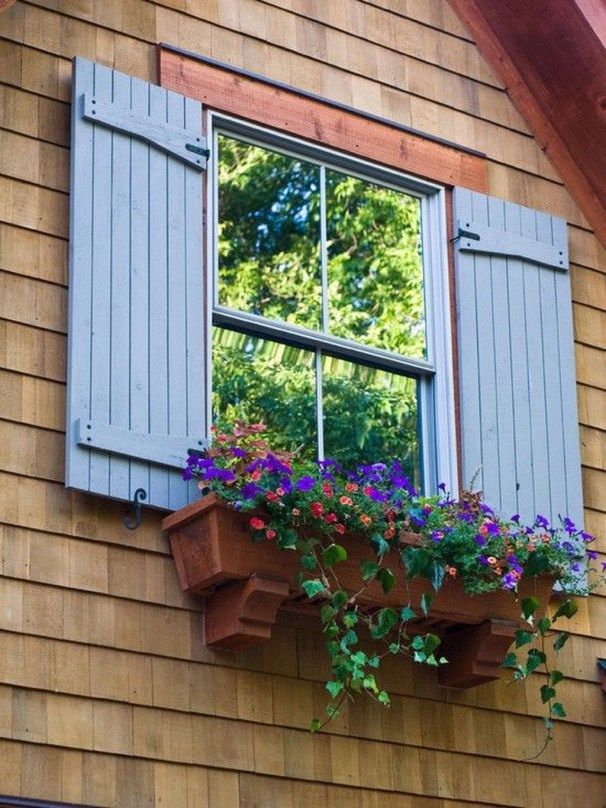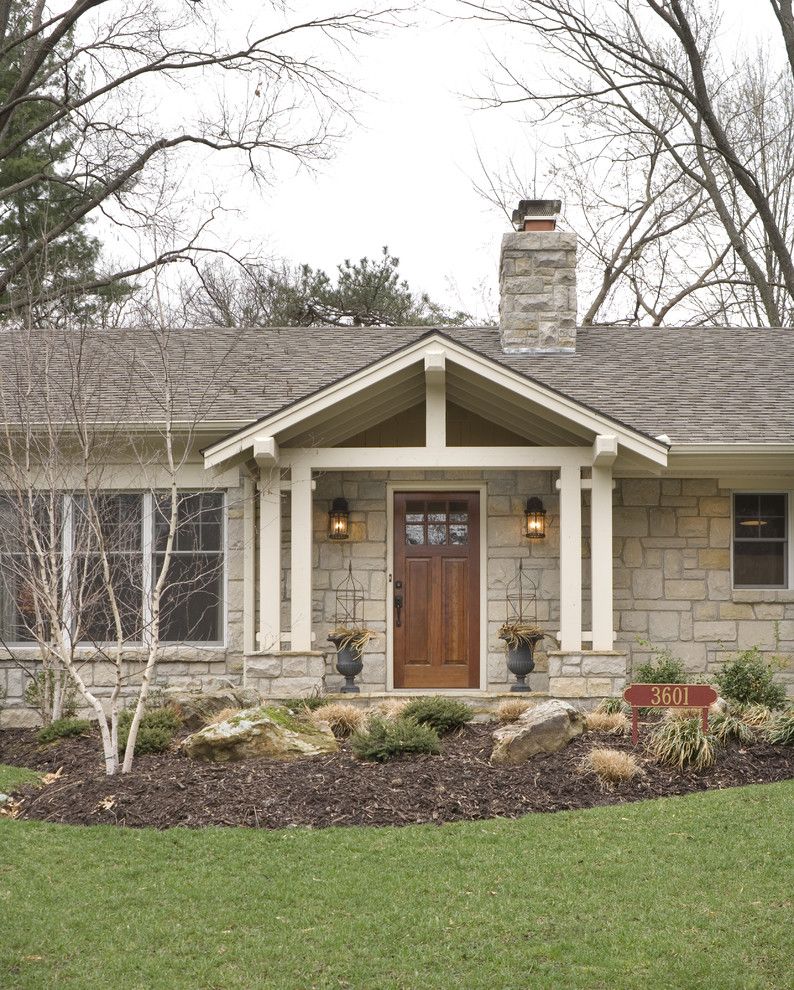Rhododendron bush pruning
How to Prune Rhododendrons
I learned to prune rhododendrons by destroying my prized rock garden. I had a 30-foot-tall pine that I needed to cut down. It missed the house by a wide margin, but it didn’t miss the rock garden, which I had lovingly tended for years.
When the last of the pine tree was removed, I discovered that the damage was surprisingly slight, except for a beautiful Rhododendron ‘Roseum Elegans’, now a 2-foot mound of broken branches and torn foliage. Curious to see if the shrub would recover on its own, I trimmed it back a bit, cut back the scaffold of branches to as pleasing a shape as possible, and waited to see what would happen. Four years later, the rhododendron is one of the most eye-catching shrubs in the yard, with a beautiful shape, dense branches, and plentiful flowers. The incident illustrates how responsive rhododendrons can be to even severe pruning.
Despite the common notion that rhododendrons can’t be pruned, these shrubs respond well to trimming.There are three common reasons for pruning rhododendrons—maintenance, shaping, and rejuvenation—and the pruning method for each is easy to learn. The result is a shrub with dense branching, plentiful foliage, and abundant flowers. And you don’t have to drop a pine tree on your shrub border to learn how to do it.
Method 1: Maintenance pruning removes old flowers and dead wood
Snip at the base of the old flower trusses to keep the plant’s energy focused on producing growth rather than seed. Also, remove dead or diseased parts of the shrub—follow the branch back to healthy wood and make a cut there.
Maintenance pruning consists of the removal of spent flower clusters, called trusses, and also of any dead or diseased wood. The trusses are not only unsightly but will eventually form seed, which uses precious energy that would otherwise be available to the plant for vegetative growth. Maintenance pruning is the easiest type of pruning and is the only one that needs to be done every year.
To remove old flower trusses on rhododendrons, use a pruning shear to snip the truss at its base, about ½ inch above the emerging flush of new growth. Some folks just grasp the stem with their thumb and forefinger and snap the truss from the plant. This works well most of the time, but occasionally the truss breaks off, taking some of the new growth with it. By using a pruning shear, such accidents are avoided.
| Maintain your rhododendron by snipping off spent flower clusters (trusses) . . . | |
| . . . and by removing dead and diseased wood. |
Wood damaged by storms or a harsh winter should be clipped from the plant. Diseased stems, often identified by their wilted, curled yellow-green leaves, should also be removed. Make the cut below the damaged portion of the plant, taking care to cut into healthy wood right above a dormant bud. Be sure to disinfect the shears with rubbing alcohol between cuts.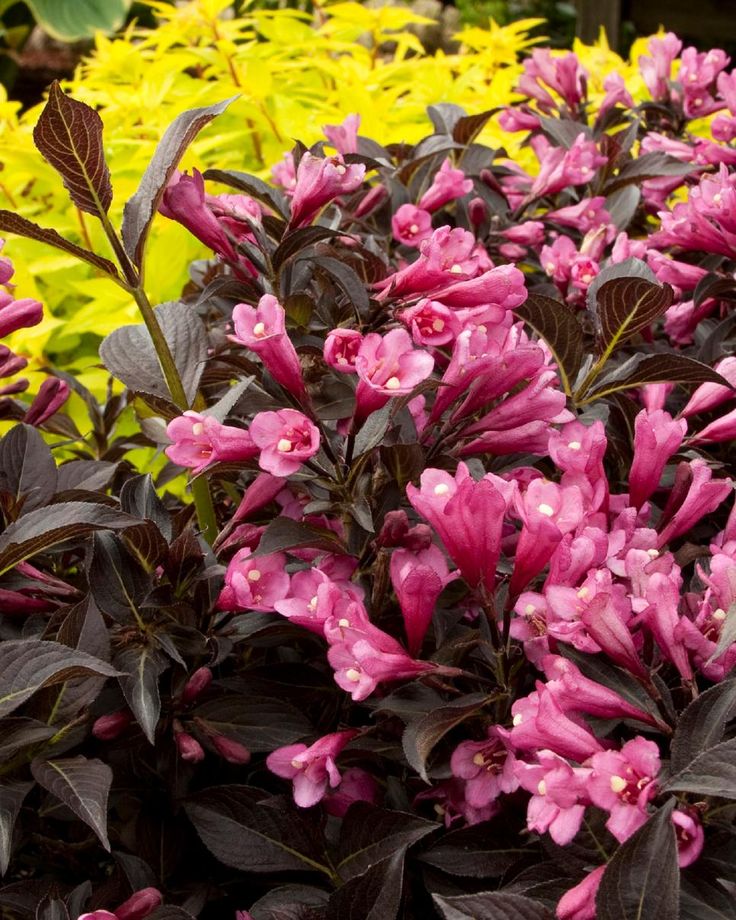
Maintenance pruning is best done when the flowers have faded and before the flush of new growth rising beneath each truss is more than an inch or so tall. Many types of rhododendrons can benefit from maintenance pruning, including some deciduous azaleas, like the Knap Hill-Exbury hybrids, and most broad-leaved evergreens, such as the popular hybrids of mountain rosebay (R. catawbiense). Some varieties of rhododendron, most notably small-leaved cultivars like ‘Elite’, ‘Northern Starburst’, and ‘PJM Regal’, rarely set seed and do not require maintenance pruning. If your flowers and flower stalks simply shrivel up and essentially disappear in the weeks after flowering, then your variety doesn’t set seed and doesn’t need to be deadheaded.
Winter damage can be common in rhododendrons. Injured branches should be removed during routine maintenance.Method 2: Pruning for shape enhances the plant’s natural habit and form
Conversely, topiary and other more formal shaping techniques prune a plant into a shape it would not naturally assume. Shaping should not be done on leggy or very large plants, as their open habit requires a more drastic technique called rejuvenation pruning.As the name implies, shaping involves altering the shape of the plant, and it can be done for many reasons, from encouraging denser branching to controlling plant width or height. It differs from other shaping techniques, like topiary, in that shaping of rhododendrons is designed to develop the most aesthetically pleasing aspects of the plant’s natural habit and form.
Shaping should not be done on leggy or very large plants, as their open habit requires a more drastic technique called rejuvenation pruning.As the name implies, shaping involves altering the shape of the plant, and it can be done for many reasons, from encouraging denser branching to controlling plant width or height. It differs from other shaping techniques, like topiary, in that shaping of rhododendrons is designed to develop the most aesthetically pleasing aspects of the plant’s natural habit and form.
Shaping improves the appearance of a plant by encouraging increased branching at its growing points. Since many evergreen rhododendrons hold their leaves for about three years, a branch will have a series of leaf whorls, each representing a year’s growth. The whorls of foliage are separated by sections of leafless stem, called internodes. In general, broad-leaved rhododendrons have much longer internodes than small-leaved and deciduous types and benefit most from shaping. To shape a rhododendron, follow the branch from the end down to the last whorl of leaves you want to keep. Make the cut about ¼ inch above the topmost leaf in this cluster. Repeat as needed.
Make the cut about ¼ inch above the topmost leaf in this cluster. Repeat as needed.
Shaping is most easily done in late winter, while the plant is dormant. Although this sacrifices some of the flower buds, it ensures a complete growing season for the new stems that emerge.
| To shape a rhododendron, follow the branch down to the last whorl of leaves you want to keep, and cut just above those leaves. | |
| To shape, cut just above the whorl of leaves. |
Method 3: Rejuvenation pruning calls for drastic cuts on old wood
Rejuvenation pruning involves the careful cutting back of each primary branch of the plant’s framework. Rhododendrons often have three or more main branches rising from the crown of the plant. These branches, called primary branches, form the basic scaffold of each shrub. Each branch is cut at a different height to produce a staggered arrangement that will make the shrub look natural when the new shoots mature.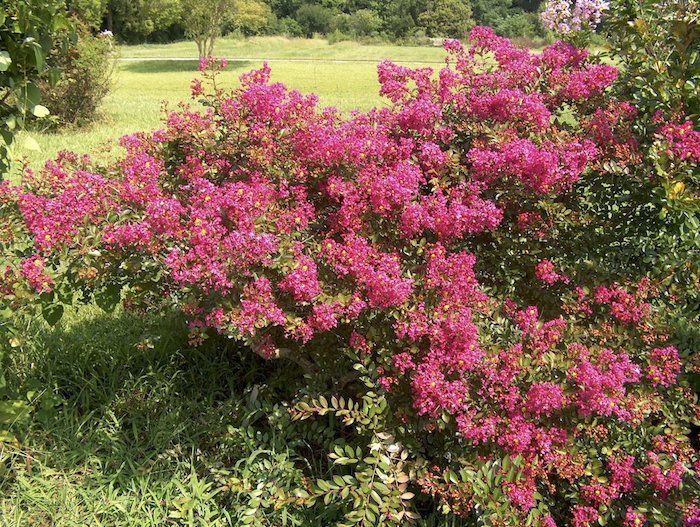 Rejuvenation pruning is best used to restore shrubs that have become leggy, overgrown, or otherwise unattractive. Many rhododendron species and hybrids can be severely pruned and come back as good as new. Rejuvenation pruning removes most of the branches of the plant, initiating the rise of vigorous flushes of new growth from previously leafless old stems. The new growth matures into a new framework of branches that can then be shaped over the years to produce a stunning shrub. It’s best to perform this type of pruning in winter, while the plant is dormant.
Rejuvenation pruning is best used to restore shrubs that have become leggy, overgrown, or otherwise unattractive. Many rhododendron species and hybrids can be severely pruned and come back as good as new. Rejuvenation pruning removes most of the branches of the plant, initiating the rise of vigorous flushes of new growth from previously leafless old stems. The new growth matures into a new framework of branches that can then be shaped over the years to produce a stunning shrub. It’s best to perform this type of pruning in winter, while the plant is dormant.
| Cuts for rejuvenation pruning are made much farther back on the shrub. On the primary branches, make your cut just above a latent bud, or even better, a cluster of buds. In severe cases, you can sometimes cut your rhododendron to within 6 inches of the ground. |
Another type of rejuvenation pruning consists of cutting the entire plant to within 6 inches of the ground.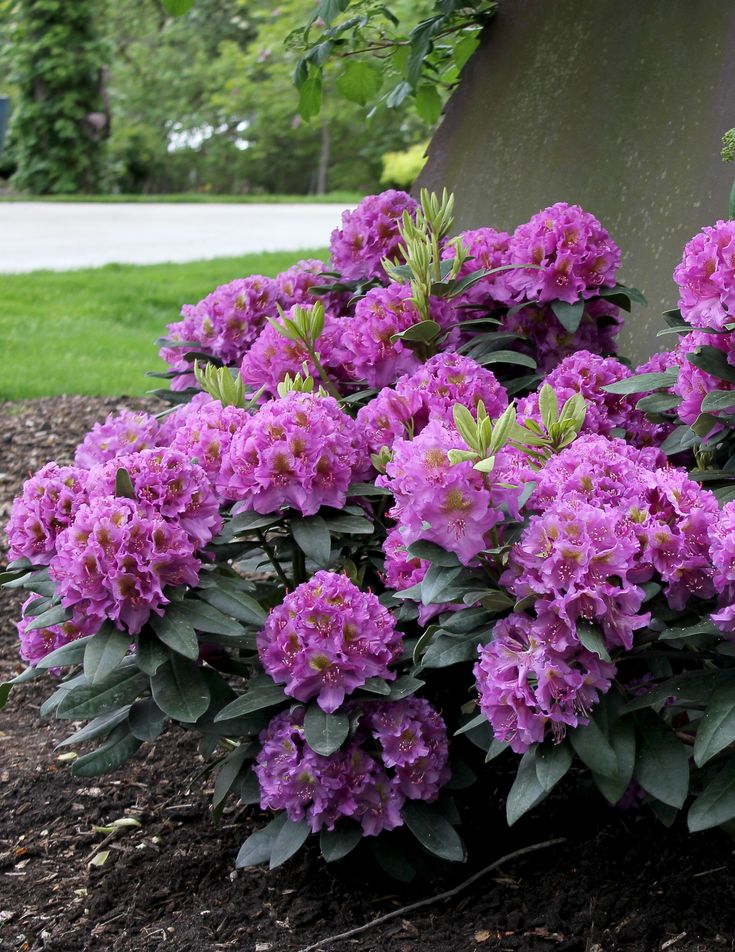 It is a quick method, but not all rhododendrons survive the treatment. In some instances, an apparently healthy plant may be weakened by disease or poor nutrition and cannot recover from the stresses of hard pruning. To see if your shrub can handle such a hard pruning, cut only one of the main branches back to 6 inches. Cut the others back to a height you are sure is healthy, say 2 feet. If new growth emerges from the 6-inch cut, you can cut back the rest of the shrub the following year and be confident in its return.
It is a quick method, but not all rhododendrons survive the treatment. In some instances, an apparently healthy plant may be weakened by disease or poor nutrition and cannot recover from the stresses of hard pruning. To see if your shrub can handle such a hard pruning, cut only one of the main branches back to 6 inches. Cut the others back to a height you are sure is healthy, say 2 feet. If new growth emerges from the 6-inch cut, you can cut back the rest of the shrub the following year and be confident in its return.
Regardless of the method, rejuvenation pruning works because of a special trait of rhododendrons. Look at the bark on a stem or main branch of many rhododendrons and you will see tiny buds, little pink dots about the size of a pinhead that pepper the surface of older branches. These little pink buds, called latent buds, are the key to successful rejuvenation pruning, as they will give rise to the new framework of branches.
Once you’ve determined how far back the plant needs to be pruned, take a moment and examine the area for a nice healthy bud (one that is firm and appears filled out), and cut ½ to ¾ of an inch above that bud. Pruning above a cluster of two or three buds is better than pruning above just one bud, as this often produces multiple branches.
Pruning above a cluster of two or three buds is better than pruning above just one bud, as this often produces multiple branches.
| Cut just above a latent bud to rejuvenate the shrub. |
All three of these pruning methods are easy to do and result in a healthier and more attractive shrub. Don’t worry about making mistakes. Rhododendrons are very forgiving—even if you drop a tree on them.
How To Trim A Rhododendron Bush
Home › Ornamental Gardens › Shrubs › Rhododendrons
Rhododendrons
By: Nikki Tilley, Author of The Bulb-o-licious Garden
Image by dndavis
The rhododendron is one of the most eye-catching shrubs in the home landscape, with beautiful blooms and lush foliage. Being popular shrubs in many landscapes, the topic of how to trim a rhododendron bush, including wild varieties like mountain laurel, is a frequently asked question.
Pruning Rhododendron Guide
Although there is often little need for pruning rhododendrons, especially in naturalized settings, these shrubs respond well to the occasional trimming.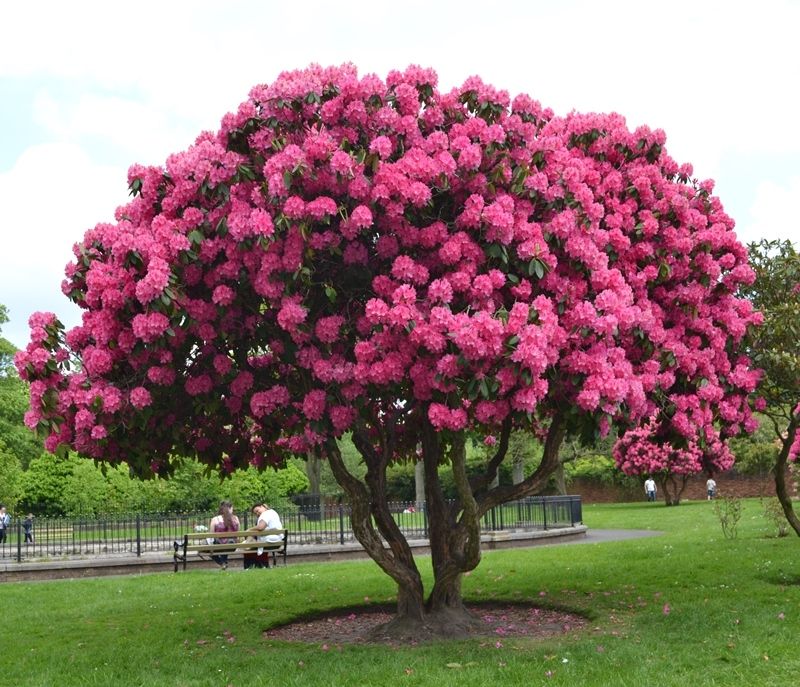 In fact, excessive growth may require a heavy pruning. Trimming rhododendrons is typically done for maintenance, shaping, and rejuvenation– as is the case for overgrown plants.
In fact, excessive growth may require a heavy pruning. Trimming rhododendrons is typically done for maintenance, shaping, and rejuvenation– as is the case for overgrown plants.
The most common type of pruning is maintenance pruning, which simply involves the removal of spent flowers and old, dead wood. It is important to remove the flower stems from the shrub once blooming has ceased. Allowing these dead flower clusters to remain can actually reduce the following year’s flowering. Cut near the base of the old flower cluster. Also, remove dead or diseased parts of the shrub, following the branch back to healthy wood and making your cut at that point.
Best Time for Trimming Rhododendrons
According to most professional landscapers, the ideal time for pruning rhododendrons is late winter, while the plant is dormant. However, any time between the first frost in fall and the last frost in spring (while the sap is low) will work.
Immediately following its lush spring growth, as new foliage is still hardening off, is one of the worst times for trimming rhododendrons. This will likely inhibit blooming.
This will likely inhibit blooming.
How to Prune Rhododendrons
If you are considering pruning, you should probably plan to fertilize your shrub in late fall the year before. Doing so afterward may result in leggy growth. Since buds form on next year’s flowers, by the time blooming has stopped, they are already well advanced. Therefore, as the flowers fade, trim no more than 15 to 20 inches (38-51 cm.) off the strongest branches. Cut back the plant to expose the inner branches. Follow the branch down to the last whorl of leaves you want to keep and cut just above those leaves, about 1/4 inch (6 mm.) above the topmost leaf in this cluster.
Large, overgrown rhododendrons can be cut 12 to 15 inches (31-38 cm.) from the ground when necessary. Rhododendrons often have three or more main branches rising from the crown of the plant. Each of these primary branches should be cut at a different height to produce a more natural-looking shrub. Cut about 1/2 to 3/4 of an inch (1-2 cm.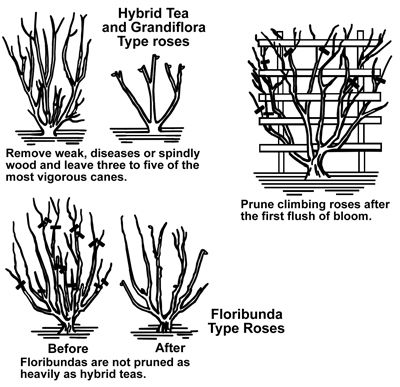 ) just above a latent bud. Pruning above a cluster of two or three buds is even better.
) just above a latent bud. Pruning above a cluster of two or three buds is even better.
Sometimes more severe pruning may be necessary, requiring cutting to about 6 inches (15 cm.) or so from the ground. Their adventitious buds at the base of the plant will send up new shoots, but keep in mind that flowering usually will not occur for up to two or three years after this heavy pruning.
This article was last updated on
Read more about Rhododendrons
Next>
Did you find this helpful? Share it with your friends!
You might also like…
0005 6 Conclusion It is hard to imagine anything more like a chic lively bouquet with an abundance of blooming flowers than a rhododendron. These tree-like shrubs will not leave anyone indifferent during the flowering period and are not unreasonably considered rather capricious and fastidious in care. At the same time, trimming rhododendrons is no more difficult than other flowering perennials.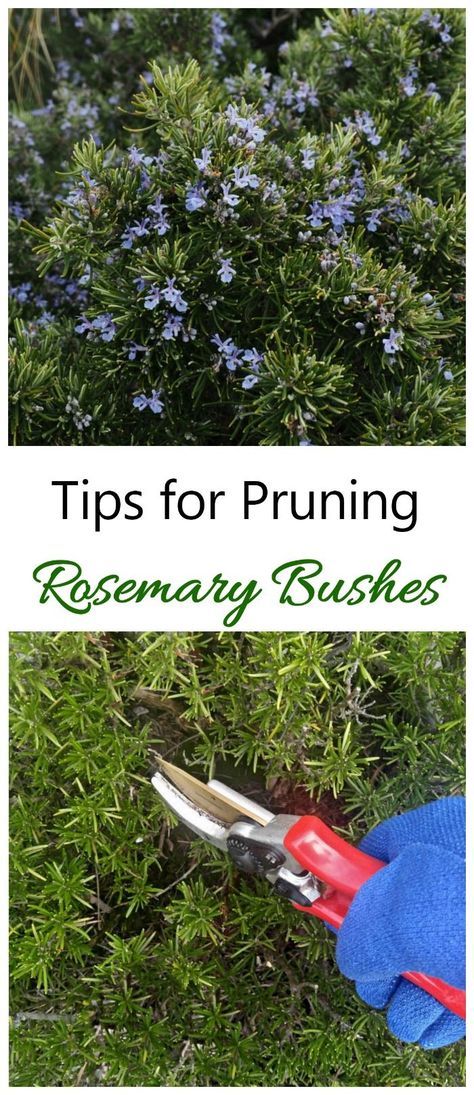 Although, depending on the variety grown, these amazing beauties in pruning have their own characteristics and subtleties. nine0003
Although, depending on the variety grown, these amazing beauties in pruning have their own characteristics and subtleties. nine0003
Is it possible to prune rhododendrons
It is widely believed that rhododendrons do not need pruning, as they are genetically built to strive for an almost ideal bush shape. And many novice gardeners are so sensitive to their promising plant pets that they get scared at the very thought that they need to pick up a pruner and cut something off from the most valuable specimen of rhododendron.
In fact, the experience of many gardeners, who have been growing various types of rhododendrons in their garden for many years, shows that rhododendrons are not only possible, but also necessary. Like absolutely all plants, they absolutely need regular sanitary pruning. Many varieties also need to correct the form of growth. And more mature plants cannot escape from rejuvenating pruning. It can sometimes be replaced only by a complete replacement of the bush. But not every gardener is ready to easily say goodbye to his pet, who has delighted him with his flowering for many years, only because he has completely lost his shape. nine0003
But not every gardener is ready to easily say goodbye to his pet, who has delighted him with his flowering for many years, only because he has completely lost his shape. nine0003
But in order not to bring your blooming pets to such a state, it is better to track all the nuances of possible incorrect growth of bushes every year and help them by forming an attractive crown with the help of pruning.
On the other hand, rhododendrons, unlike many other ornamental shrubs and trees, do not always require mandatory pruning. Indeed, even during transplantation, thanks to a small and compact root system, their roots do not stop their activity for a moment. This means that when moving shrubs with a whole root ball, they do not need the subsequent traditional shortening of the branches in order to balance the "bottoms" and "tops" of plants. nine0003
Why you need to prune rhododendrons
As in the case of almost any representatives of the plant kingdom, rhododendron pruning helps to solve many different problems:
- it serves as a preventive measure for various diseases and prevents pests from penetrating deep into branches or trunks;
- enhances growth and branching;
- helps the bushes perform at their best during flowering;
- increases the decorative effect of plants and reduces natural imperfections; nine0006
- allows you to enjoy the abundant and colorful flowering of your favorite bushes every year;
- helps prolong the life and beauty of many aging specimens.

When is the best time to prune rhododendrons
The most appropriate timing for rhododendron pruning depends most of all on the purpose for which this or that procedure is carried out. It is most optimal for most varieties to carry out different types of pruning at the very beginning of spring, even before the buds awaken. In some cases, this must be done in late spring or early summer. Most rhododendrons require special pruning after flowering. Finally, it is allowed to prune in the autumn, before the onset of winter cold. nine0003
How to prune a rhododendron
There is no single standard technique for pruning any rhododendron. The type, degree and even the time interval for pruning is chosen depending on the species (deciduous or evergreen) and the age of the plant.
All existing varieties of rhododendrons are usually divided into the following categories, which differ in the types of pruning applied to them:
- small-leaved deciduous;
- deciduous and semi-evergreen large-leaved; nine0006
- evergreen small-leaved;
- Evergreen large-leaved.
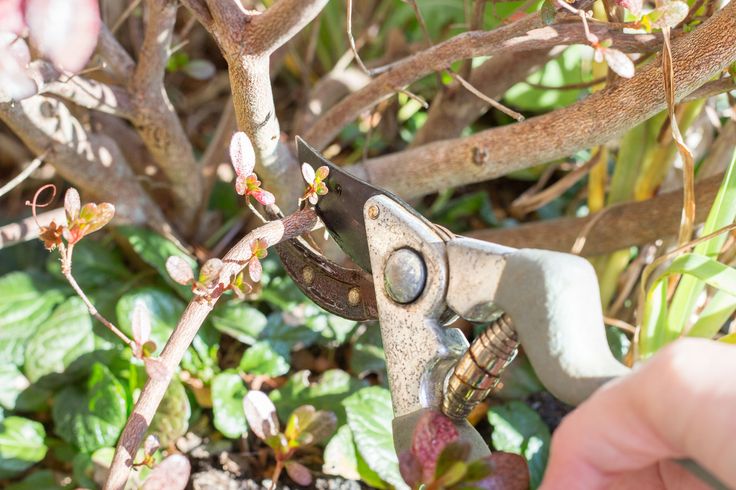
For plants of the first group, it is very important to carry out, from the very first years after planting, annual pinching of the tips of young shoots in late May or early June to form a dense and beautiful crown. In autumn, and throughout the season, you can ruthlessly remove all too frail and underdeveloped branches, as well as shoots growing towards the center of the crown. Anti-aging pruning for shrubs of this group can be carried out 1 time in 5-7 years. nine0003
Attention! For a group of shrubs with large leaves, it can be important to wait for bud break and then cut off shoots that have not survived wintering.
For rhododendrons of the third group with small evergreen leaves, shaping pruning is especially important, which stimulates the formation of many young branches. With a strong desire, these varieties can be given almost any shape by trimming. Even form neat attractive "balls" from them. True, this requires a great deal of regular effort and attention on the part of the gardener throughout the year and is best done in warmer regions with mild winters.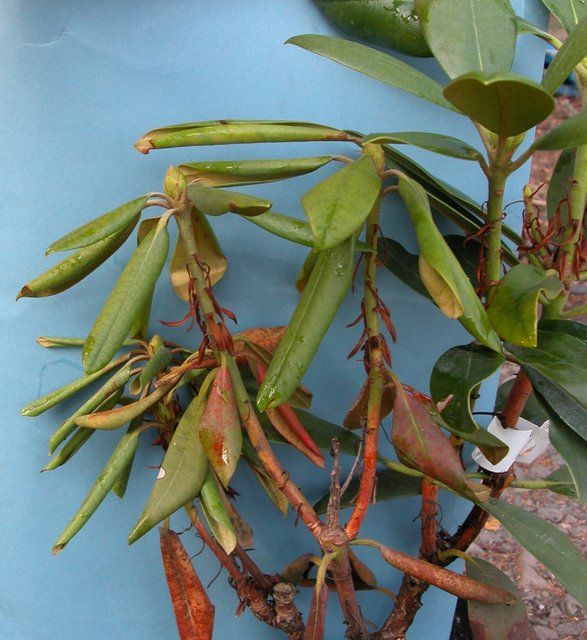 nine0003
nine0003
In large-leaved evergreen species, very elongated and bare shoots are usually shortened in early spring to stimulate lateral branching. Anti-aging pruning in large-leaved rhododendrons is carried out no more often than after 12-16 years.
How to prune rhododendrons in spring
In early spring, before the buds swell, they usually carry out:
- sanitary;
- start;
- forming;
- rejuvenating pruning of rhododendrons. nine0006
Under the conditions of the middle zone, this period usually occurs in the second half of March or the beginning of April.
After the main snowmelt, it becomes approximately clear how the bushes endured the winter. Sanitary pruning of rhododendrons consists, first of all, in the removal of completely broken shoots, which are cut off just below the break. If the branch is not completely broken off, then if you wish, you can try to save it. To do this, the fracture site is tied with a polyethylene tape, and the shoot itself is tied to the upper branches or a supporting support is placed. nine0003
nine0003
In deciduous rhododendrons, during severe winters, the bark may crack on individual shoots. In these cases, it is necessary to cut off all damaged branches to a living place.
Sanitary pruning also includes the removal of dry and frozen branches and leaves. But in many deciduous varieties it is not so easy to identify them before the buds swell. Therefore, you can wait a bit and prune later, after the leaves bloom.
Initial pruning is usually carried out after the purchase and transplantation of young shrubs to a new location. For evergreen types, it is usually not necessary. But deciduous bushes, if desired, can immediately be given an eye-catching shape. nine0003
Spring pruning of rhododendrons is often carried out to form a decorative crown. At the same time, either strongly protruding branches are removed, or those that grow deep into the crown and thicken it unnecessarily. As mentioned above, in deciduous types, it is recommended to additionally pinch young shoots, especially at a young age.
Anti-aging pruning is started when the rhododendron bushes grow so large that they block part of the path on the path or shade the windows of the living quarters. In this case, you should not cut branches that are more than 3-4 cm thick, otherwise the bushes may die. Especially tender are the evergreen large-leaved varieties of rhododendrons. The places of cuts must be covered with a special garden paste or var. Already after 20-25 days, dormant buds may awaken on the branches below the cut and the bush will begin to grow with fresh shoots. nine0003
The next year, the restoration of decorativeness and lush flowering is already possible.
It happens that it is necessary to carry out a strong rejuvenation by cutting branches almost to a stump. In this embodiment, the branches are cut at a distance of 30-40 cm from the ground. But you should not cut the entire bush at once. Deciduous species may be able to withstand such pruning, but evergreens have a chance not to survive it and not recover.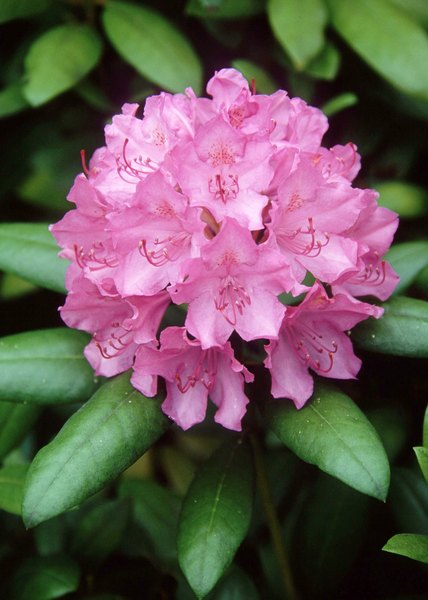 Therefore, they usually cut about half of the bush in order to complete what they started next year. nine0003
Therefore, they usually cut about half of the bush in order to complete what they started next year. nine0003
How to prune a rhododendron after flowering
If you provide rhododendrons with competent and appropriate care throughout the season, they will delight with abundant flowering and fruiting. But it was noticed that in this case the plants have some periodicity in flowering. Because they spend too much energy on the formation of fruits and seeds. If the bushes are grown solely for the sake of lush and beautiful inflorescences, then immediately after flowering they must be carefully broken out or cut off. Usually, a faded inflorescence is taken with two or three fingers and slightly bent to the side. It breaks easily. You just need to look carefully so as not to accidentally hurt the young shoots that form at the very base of the inflorescences. nine0003
As a result, all the available nutrient reserves in the plant will go not to the formation of seeds, but to the laying of new flowering buds and the formation of new shoots. In addition, instead of one, two or three new young shoots are usually formed at the site of the inflorescence.
In addition, instead of one, two or three new young shoots are usually formed at the site of the inflorescence.
How to prune a rhododendron for the winter
In winter, rhododendrons are only cut for sanitary and sometimes rejuvenating pruning. In terms of time, it most often falls on the end of September or the first half of October. Depending on the region, this should take place a few weeks before the onset of a hard frost and 2 weeks after the last feeding. nine0003
Pruning of rhododendrons in autumn is most often carried out in order to reduce the height of the bushes and ensure their full wintering under shelters.
Advice from experienced gardeners
In order to get the desired result from pruning rhododendrons, it is useful to listen to the opinions of experienced gardeners who have been successfully growing this luxurious shrub for many years.
- After any pruning, even sanitary, rhododendron bushes must be watered abundantly and fed with a complex set of fertilizers.
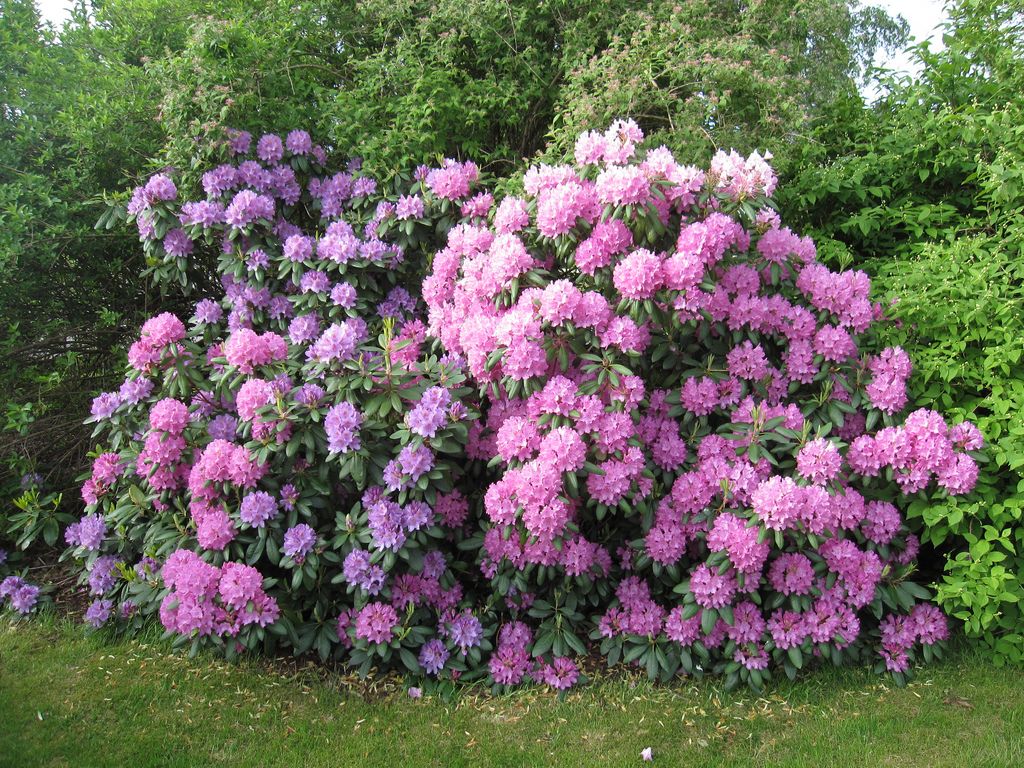 The only exception is autumn pruning. nine0006
The only exception is autumn pruning. nine0006 - It is best to prune the bushes on a regular basis, checking the correct shape of the plants every year. If for some reason the rhododendron has not been cut for a long time, then you should not carry out cardinal pruning within one season. It is better to do it gradually.
- When shaping and rejuvenating pruning in early spring, it is very important to feel for dormant buds and cut the branches above them. Sleeping buds are usually small, pinkish thickenings on the shoots and are quite easy to feel with your fingers. nine0006
- If rhododendrons have been grown from seed, they should not be pruned at all before the first flowering. Otherwise, it may delay the formation of flowers for another 2-3 years.
Conclusion
Don't be afraid to prune your rhododendrons. For many varieties, pruning is the only way to get beautiful and attractive bushes. In addition, only regular removal of inflorescences helps these beautiful plants bloom profusely every year.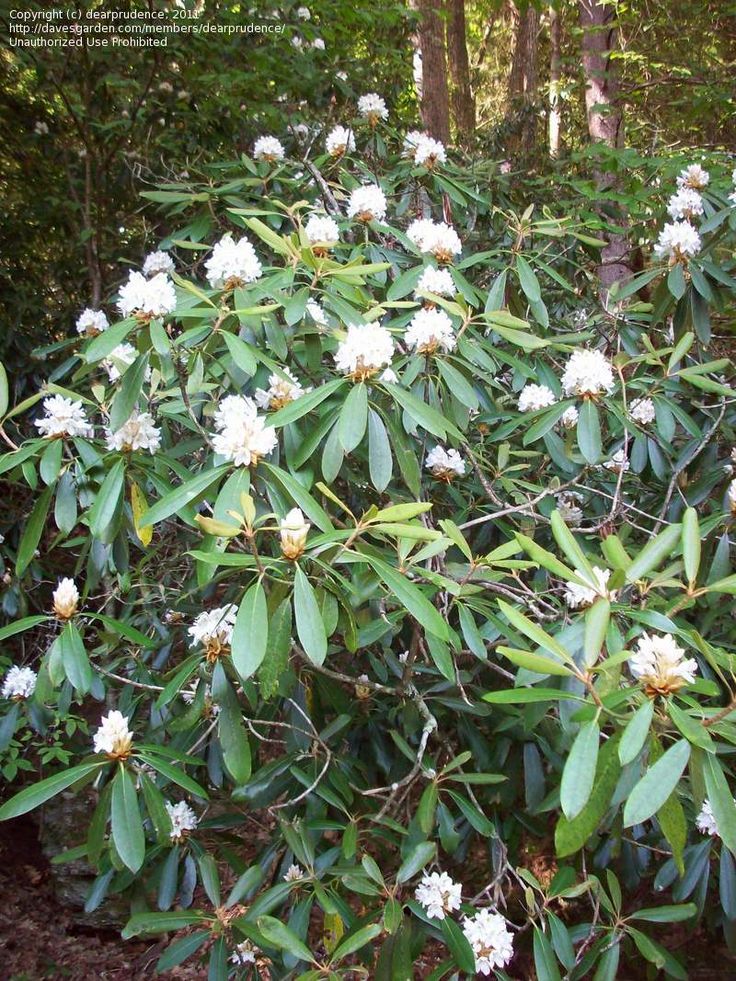
pruning of rhododendrons from A to Z (photo)
Content ✓
- ✓ Sanitary pruning of rhododendrons
- ✓ Starting trimming of rhododendrons
- ✓ PREACHING RODEDEDDENRONS
- ✓ ROOLING RODEDDENRONS RODENDRONS ✓ RODEDRODRONS - RODEDRODS OF RODENRONS - RODENRODS OF RODENRONS.
Rhododendrons are in many ways special shrubs, unlike most of the crops we are used to. They need a special place in the garden, special soil. And even special agricultural practices. For example, soil mulching is a must, loosening is by no means! nine0003
Pruning in this row is an exception, here the rhododendrons appear in the general formation.
With pruning, they have everything like the others, well, or almost everything.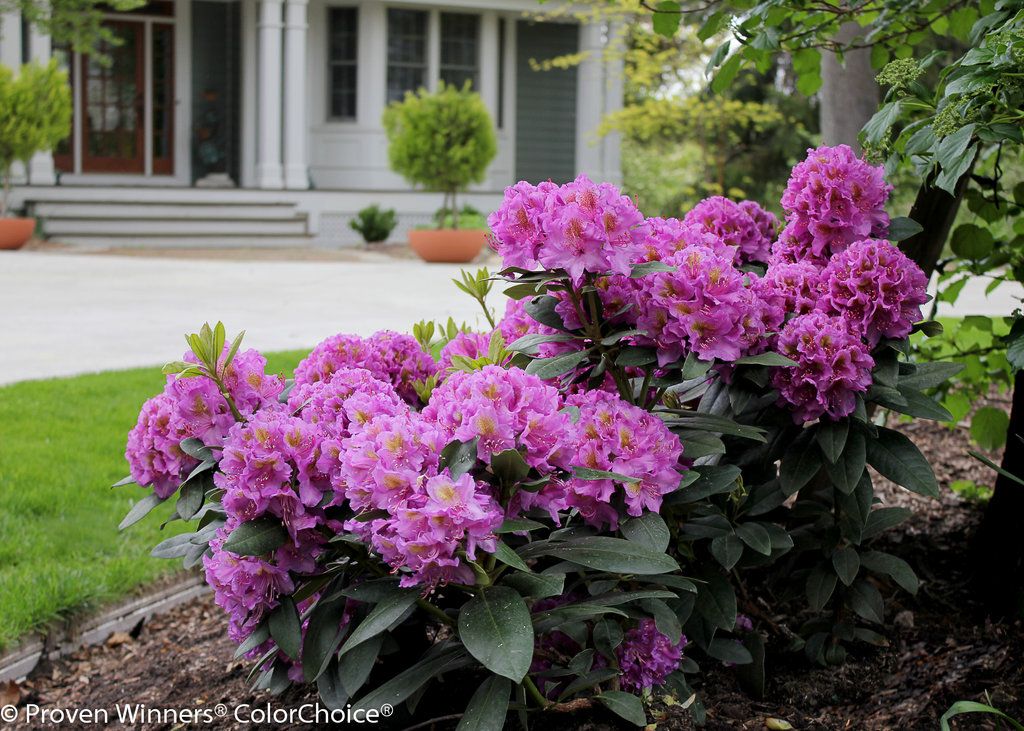 There are, as usual, three types of pruning: sanitary, shaping, rejuvenating.
There are, as usual, three types of pruning: sanitary, shaping, rejuvenating.
All that is necessary for this article is here >>>
Read also: Landing of rhododendrons - where and with what: neighbors and companions of rhododendron
Sanitary pruning of rhododendrons
are performed according to wintering results early in spring. We remove the broken branches, carefully cutting the shoot below the fault. Small breaks can be pulled together with an elastic bandage, fix this place and substitute a prop under the bruised branch to neutralize its weight (photo 1). If the branch has broken less than half its thickness, there is a good chance that the break will heal. We leave the support under the shoot for a couple of years. nine0003
Frozen shoots cut out to healthy tissue. In deciduous rhododendrons, in winters with sudden changes in temperature, the bark often cracks. We cut out such shoots to the living. Sometimes it is difficult to distinguish a frozen shoot of an evergreen rhododendron from a living
stem, in which only the leaves were damaged (“burnt”, but actually dried out under the action of the early spring sun and wind). If in doubt, postpone pruning for a while. Soon it will be absolutely clear whether the escape is alive or not. The leaves of a frozen shoot are dry, dull, and fall off easily. “Burned” leaves on a live branch do not fall off by themselves; at the base of their petioles, buds may already be visible, from which new leaves will bloom. So, in photo 2, only a few shoots in the upper left part of the crown have completely lost the rhododendron, the rest will successfully grow. nine0003
Small-leaved evergreen rhododendrons are distinguished by the fact that even a shoot that has completely lost its “burnt” leaves can again completely dress in foliage. Do not rush and cut varieties from this group, unless the affected plant is sitting in plain sight and does not spoil everyone's mood with its condition.
Starter pruning of rhododendrons
As a rule, we buy evergreen rhododendrons in the form of a bush with a beautiful, evenly developed, harmonious crown. Deciduous rhododendron varieties (deciduous azaleas) often don't look as good.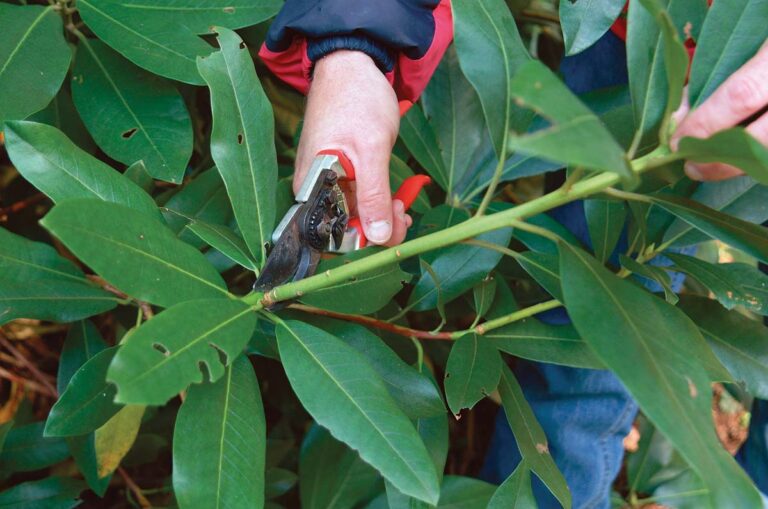 They have one or not
They have one or not
how many long, bare and relatively thick shoots with inflorescences at the top and a few short and thin branches. It is better to cut such specimens immediately, trying to give the crown a more or less symmetrical shape (photo 3, 4). Already in the middle of summer, the bush will be much more branched (photo 5), and in the fall you will see that a well-rooted rhododendron has quite successfully laid flower buds over the entire surface of the crown. Thus, we lose in the height of the bush, but win in its shape and quality of future flowering. And such a bush will quickly gain height. nine0003
Formative pruning and pinching of rhododendrons
This type of pruning is carried out either in early spring or closer to the flowering time of the rhododendron, i.e. outside the stage of active sap flow. We cut off unsuccessfully located branches, shorten those that weakly or do not give lateral shoots at all, i.e. naked (photo 6). As a rule, formative pruning is easily possible on bushes of deciduous rhododendrons. Many semi-evergreens (such as the Ledebourg rhododendron and the entire PJM series) respond well to pruning, responding with dense branching and a compact crown shape. With evergreen rhododendrons, it is easy to reduce or narrow the crown, cutting into a well-located branch. nine0003
Many semi-evergreens (such as the Ledebourg rhododendron and the entire PJM series) respond well to pruning, responding with dense branching and a compact crown shape. With evergreen rhododendrons, it is easy to reduce or narrow the crown, cutting into a well-located branch. nine0003
A convenient technique is to pinch the shoots of deciduous rhododendrons (photo 7, 8). Thus, we shorten a shoot that is too long and encourage it to branch, achieving a beautiful, evenly developed crown shape. The lateral shoots that appear as a result of pinching have time to lay flower buds.
Rhododendron Rejuvenation Pruning
Rejuvenation pruning, like any other, works well on young rhododendrons. After radical pruning, they grow back easily. Another thing is that young people do not need it. If you are a determined person, then do not be afraid to cut the old bush into a stump, i.e. shorten all shoots to 20-30 cm. The timing for anti-aging pruning is the same - early spring or immediately after flowering. But not all old specimens will easily endure such pruning. nine0003
But not all old specimens will easily endure such pruning. nine0003
An alternative to planting on a stump of a bush with bare stems, sparse branching, weak flowering and other signs of aging is to replace it. Yes, sometimes it is more rational to replace a bush that has lost its decorative effect, rather than to seek a return of beauty from it with the help of pruning. This is especially true in relation to tall varieties of evergreen rhododendrons.
More densely branched evergreen rhododendrons with a cushion-like habit can often be rejuvenated by pruning. It is performed gradually, shortening up to 15-20 cm by several shoots per season. If successful, buds wake up on old wood and strong young shoots appear (photo 9).
Deciduous rhododendrons can usually be rejuvenated by pruning. In this case, a radical landing on a stump is rarely required, often it is enough to simply reduce the crown by a third or half. In photo 10, a Japanese rhododendron bush, which is over 35 years old.

